Lessons from Zurich for a Londoner
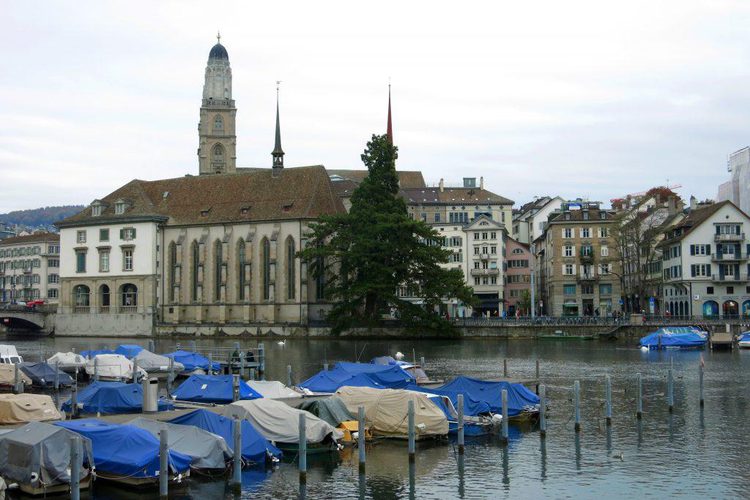
Zurich was never a place I had thought about visiting, but a friend of mine happened to be working there, and mentioned showing me around if I was ever in the city and I decided to take them up on the offer.
Zurich is known as a global centre for banking and finance, but as well as that, it’s centre is a beautiful example of picturesque lanes and streets in it’s Old Town, and is surrounded by natural beauty with mountain trails and lakes.
I loved the Old Town’s beautiful, meandering streets. The old buildings are packed together, but each had their own individuality and character. With its almost organically developed layout up, down and along the terrain, you could get lost for hours and always find something new. Zurich is a very pedestrian centred city, traffic and car usage was very low, with most people walking, travelling via public transport, on bicycles, or on scooters. Cars are very courteous to pedestrians, slowing well in advance for people to cross. Zurich has a fantastic connection with its natural spaces, such as their mountains and forests, allowing people to easily take advantage and enjoy them. I couldn’t help comparing the Swiss city with my home city, London.

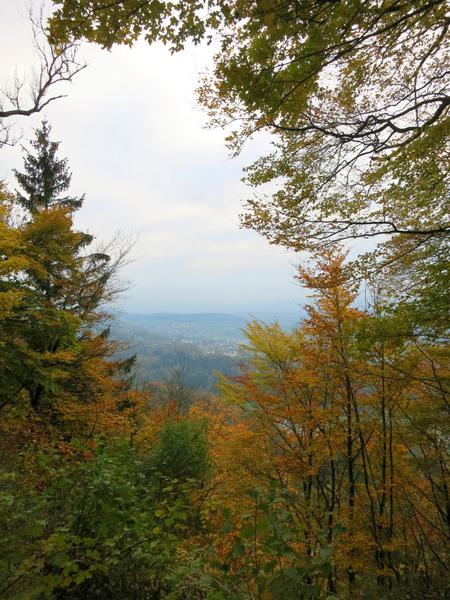
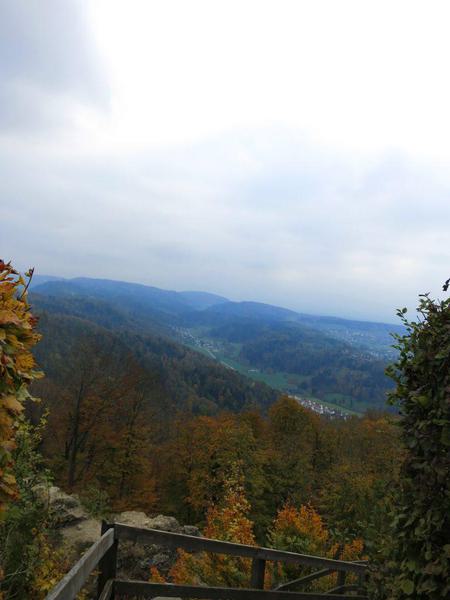
London and Zurich
London and Zurich have a very similar character and diversity. Both old cities, founded around 2,000 years ago, they seem to have developed concurrently with each other, with characteristic winding architecture and layout in their older areas bleeding into modern streets and centres, more of an amalgamation of timelines.
Size and Terrain
Map 1 - London Terrain, Map 2 - Zurich Terrain
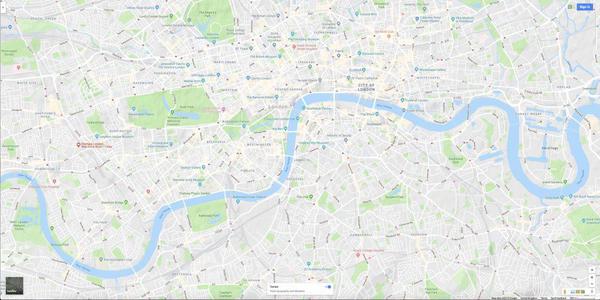
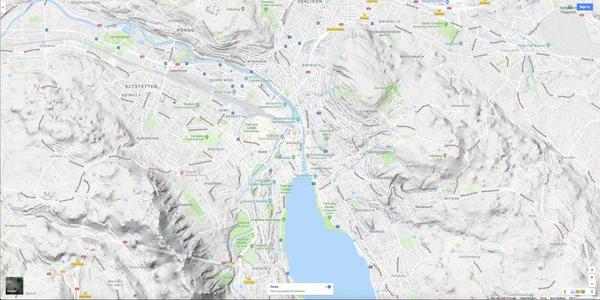
In terms of physical size, London is significantly bigger at 1,572km2, compared to Zurich’s 87.88km2, and with very different landscapes. London has a very level terrain compared to Zurich: the highest point in London is 220m above sea level, whereas Zurich encompasses mountains up to 871m above sea level. The difference in terrain has allowed London to continually grow outwards, whereas Zurich’s surrounding mountains and lake has limited its outward growth. It’s fascinating to see how this has seemed to influence the architecture and city plan, with Zurich’s utilisation of building in levels in its old city centre.
The two cities also have a vastly different population size. The population of Zurich in 2018 is 1,370,779 people, with London at almost ten times more at 9,046,485 in 2018. You could feel the difference too. I’m used to London’s flurry of crowd and constant hustle and bustle. Zurich has a lot of breathing room between the Old Town, the newer city centre and big transport hubs.
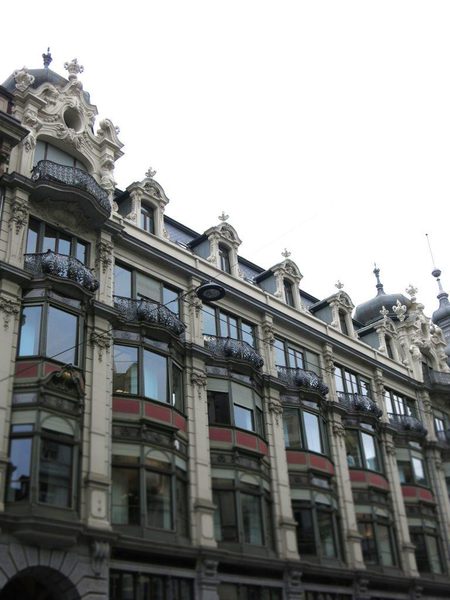
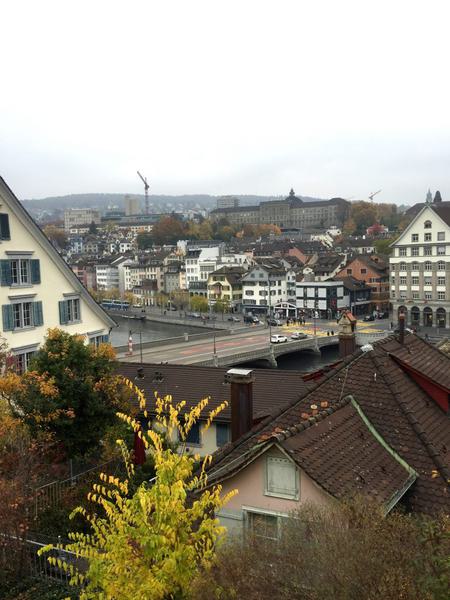
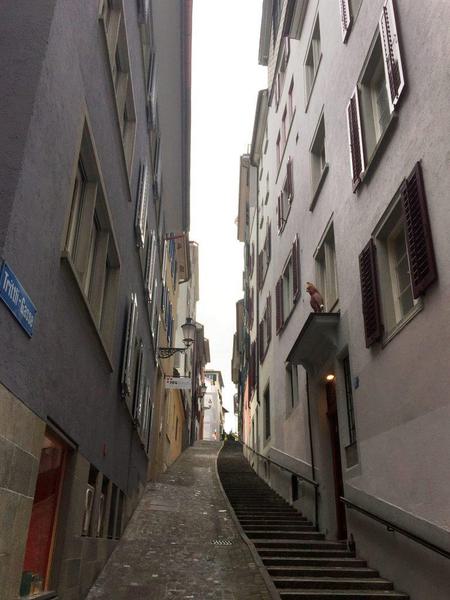
Movement
Map 3 - London Transport, Map 4 - Zurich Transport
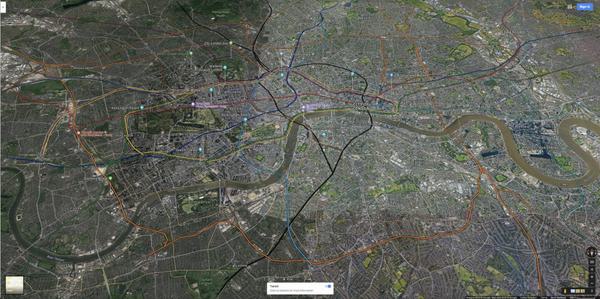
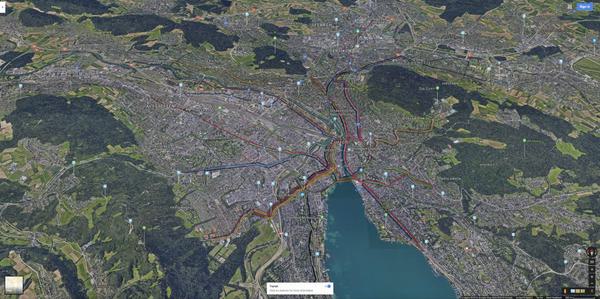
Public Transport
Public transport in both cities are well utilised, but one big factor on this is each city’s population size. You can really see the difference in how much pressure is on London’s public transport systems compared to Zurich.
London’s are also more varied, ranging from bus, overground train, tube and national rail. Zurich relies on trams, national double decker trains (which allow you to get anywhere in the country with little difficulty), and some underground trains. Trams in Zurich are fantastic: quick, on time and frequent.
We’re spoilt with London’s clear transport maps and signage, and ubiquitous Oyster card system. London is strides ahead in its signage, mapping the city on small boards throughout its streets, with clear bus and train maps at every stop, and plenty of clear street signs and sign posting. Zurich had some signage on tram and train stops, but they weren’t as clear and made situating yourself and navigating difficult. I relied mainly on Google Maps for getting around Zurich, which I was glad that my mobile data allowed. Though the city’s rambling nature was charming, I could (and did) have gotten hopelessly lost for hours.
Map 5 - London Cycle Links, Map 4 - Zurich Cycle Links
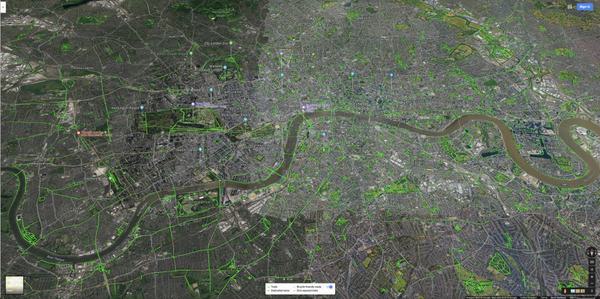
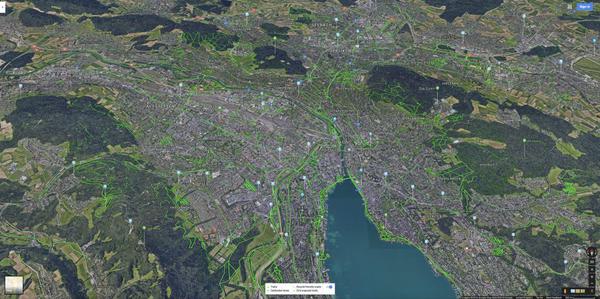
Cycle
Zurich doesn’t really prioritise cars, with the city centre in particular being more pedestrian friendly, and so cycling is one of the main modes of transport for getting around the city. I think this also has a positive effect of wellbeing, particularly fitness and environment. With a minimal amount of cars and traffic, cycling is safe and accessible, especially with the well-utilised bicycle and scooter rental system. Cycling in Zurich is much more connected and varied, allowing cyclists to roam throughout the city safely and with ease.
Compare this to London: although we have a good population of cyclists in the city, the roads are a very different beast for the common cyclist in London, and not as accessible to the everyday person. Though we have a similar rental system for bikes (and electric scooters), our bias for cars and the disjointed network hinders daily cycle use, particularly for the less confident cyclist. We are way behind the Swiss in this regard.
Looking at the cycling links of Zurich compared to London on google maps, cycling in London can be more disjointed and broken, whereas in Zurich it is much more connected and varied, allowing cyclists to roam throughout the city safely and with ease.
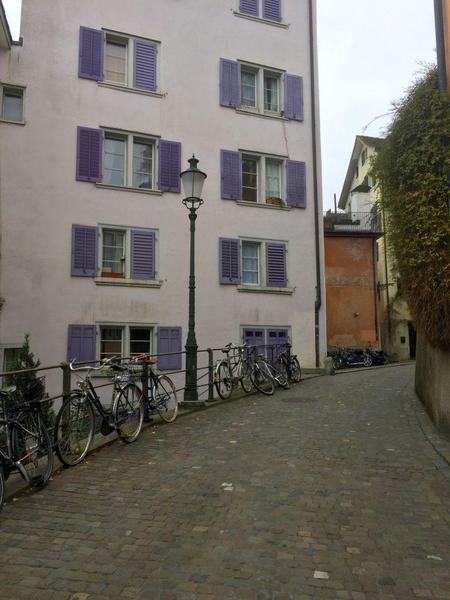
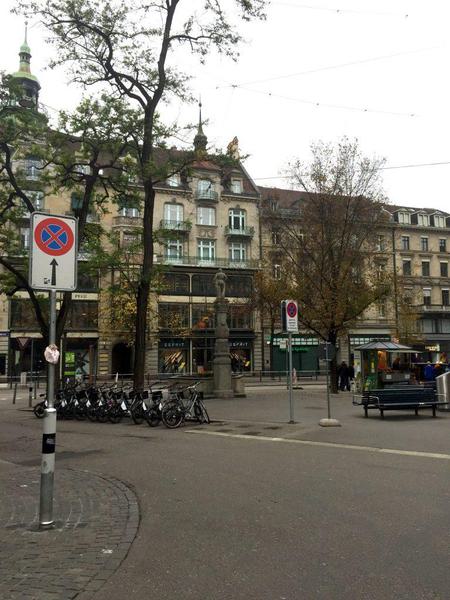
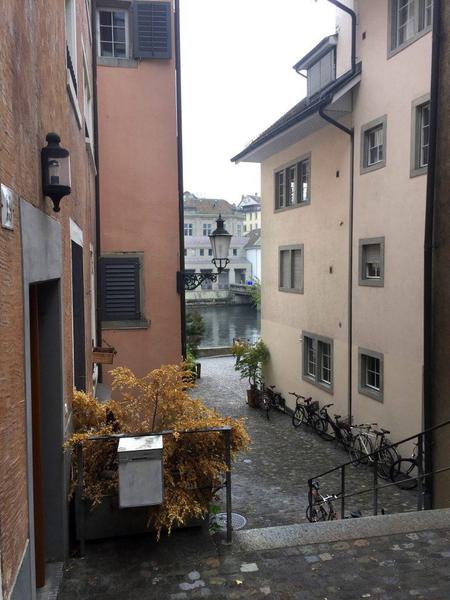
What worked well in Zurich?
Pockets of Public Space
Throughout Zurich there are many pockets of public space: small green spaces, squares and courtyards, spaces along the river. It felt like any space left unclaimed became a publicly claimed space. This seems to be embedded in the old city’s culture too, enforced with the plethora of decorative fountains with drinkable water. In this winding city you can always find a quiet corner, even though most of these pockets are encompassed by residential houses or small niche shops and studios. The only trouble was working out whether a space was public, or you just happened to wander into someone’s garden!
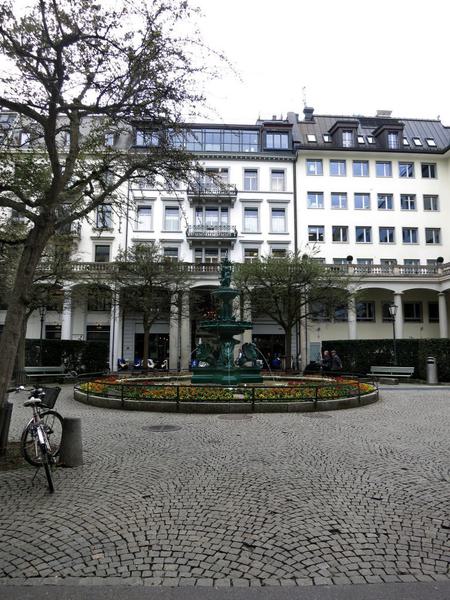
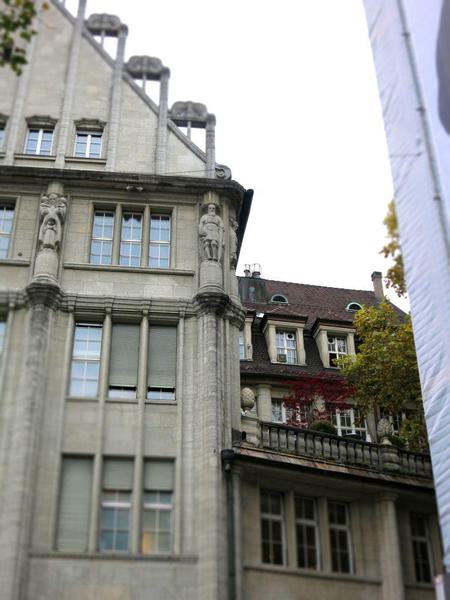
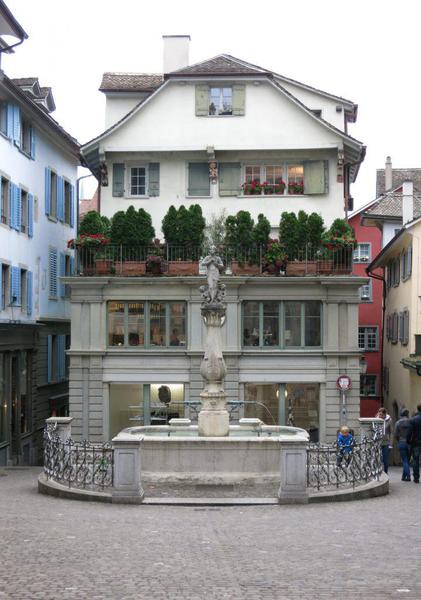
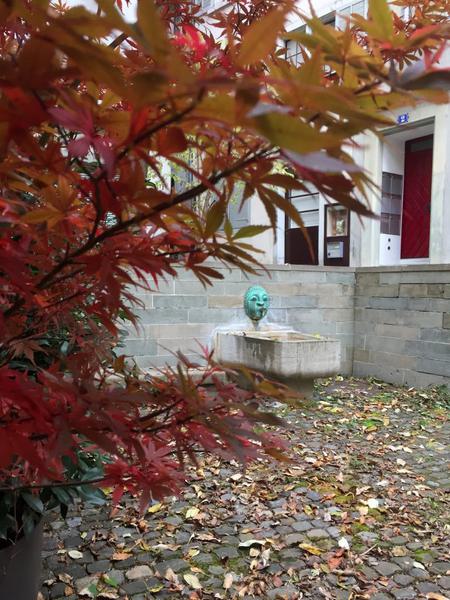
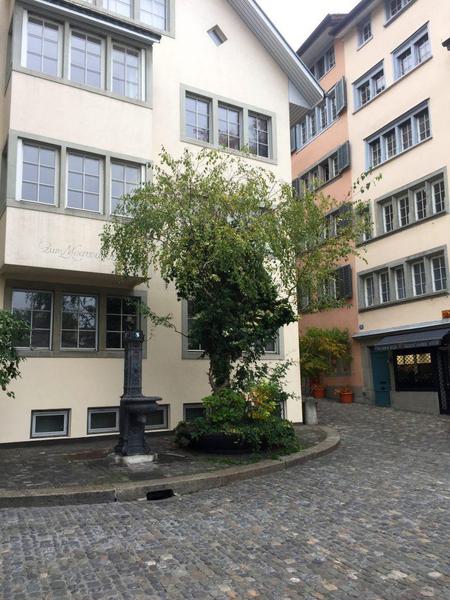
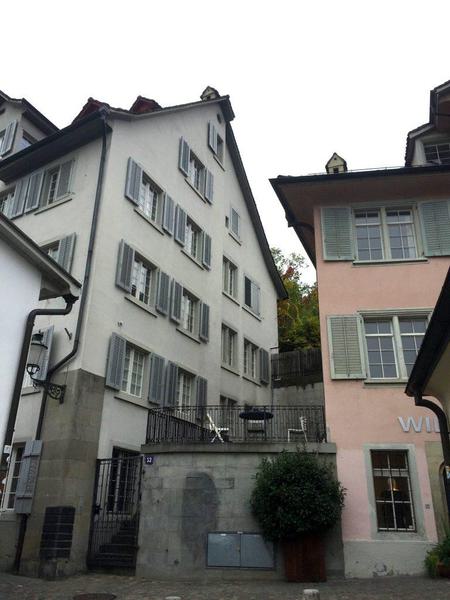
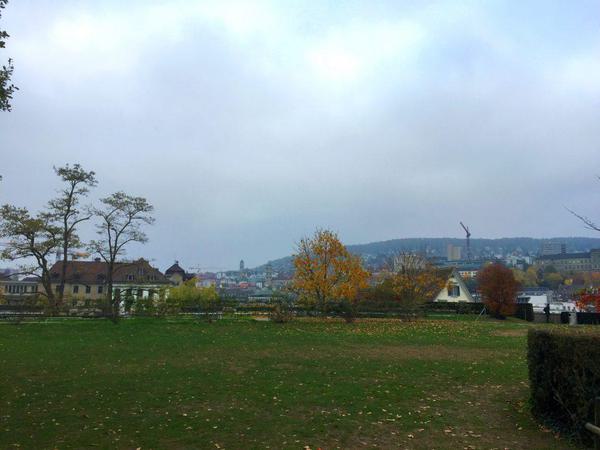
What could be improved in Zurich?
Shops in the Suburbs
Most of Zurich’s shopping and entertainment is focused into the central part of the city, and seems to almost cut off when it goes into the suburbs. This more contemporary layout seems focused on residential over mixed use, which means things die out pretty quickly once it begins to get dark. In the central part of city, the night life is vibrant and, with the good public transport links supporting this, moving around is easy. Once you’re out of the centre, it is almost eerily quiet. And popping out to a corner shop is often not an option, unless you’re near a train station.
Final word on Zurich
As a city, Zurich seems founded on the wellbeing of its people. Whether this is intentionally built or shaped by the habits of its people, the city feels like it has taken a lot of small pressures its inhabitants by making connections and space – connection to nature and green spaces, connection to home, work and play, connection to old and new – while still keeping breathing room between them all.
Zurich is a city which has found balance between its values, but I think that it is at the mercy of its population. A growth or shrink in population will tip this balance in one of two directions: a population too big and Zurich may struggle under the pressure of maintaining the same level of wellbeing for its people, with the breathing room between its connections becoming smaller and more crowded. A population too small and the connections it values may be lost as they drift further apart. Or Zurich will adapt and evolve; as it has before in the 2,000 years it has been standing. As it stands, Zurich is a wonderful city which we can learn from, and I think it will be exciting to see how it maintains its strengths and values in the future.
Related Updates
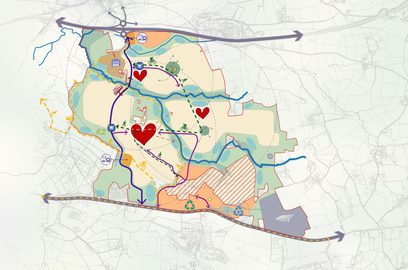
Marlcombe, East Devon selected as one of the New Towns

Tibbalds

Lizzie Le Mare attending LREF 2025

Tibbalds
Newham Council’s 50% affordable Carpenters Estate regeneration gets underway

Tibbalds
Stay In Touch
Sign up to our Newsletter
Subscribe to our newsletter to receive updates about making people friendly places.
